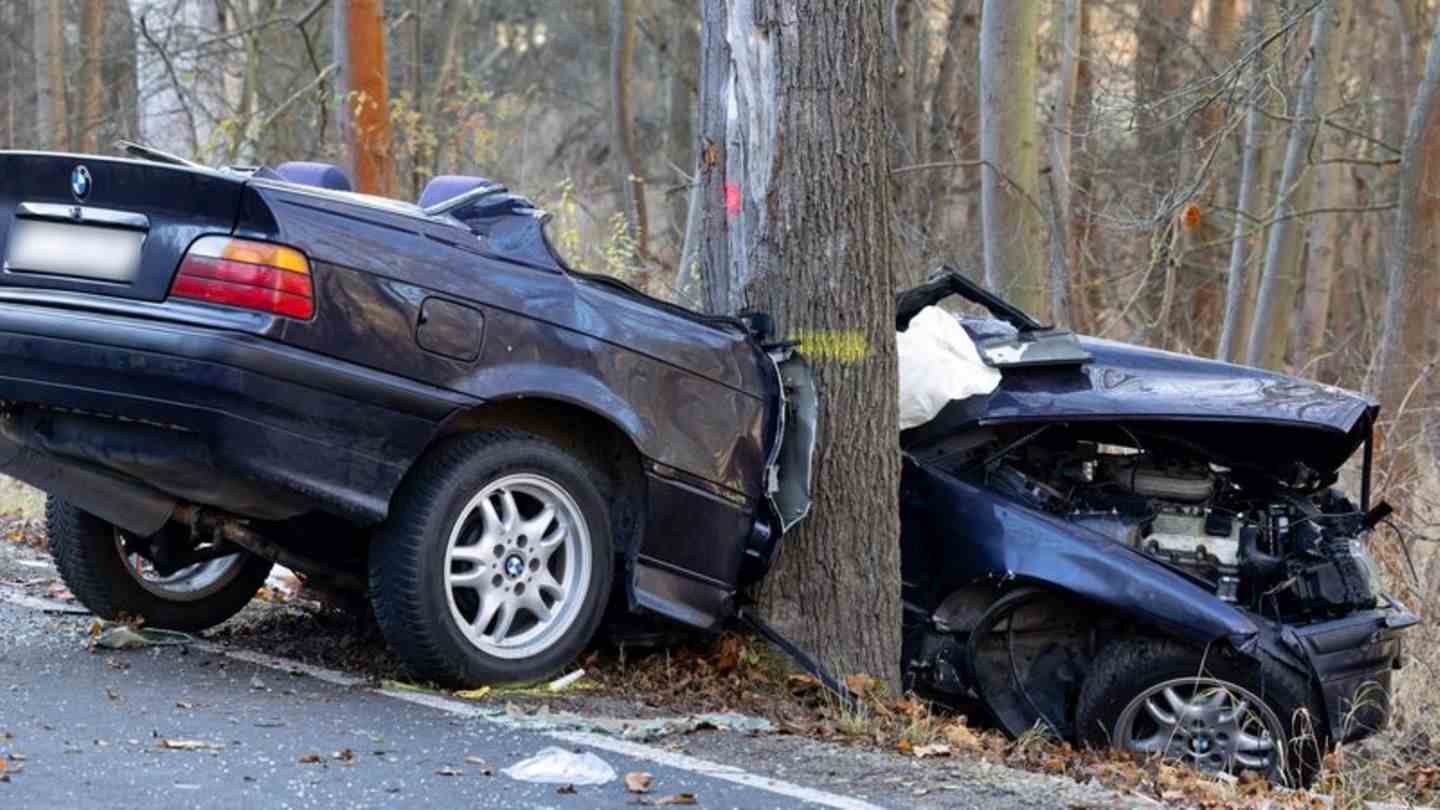road safety
Dekra: Accident victims are often young and male
A car got stuck in a tree in a traffic accident (archive photo). Photo: Michael Reichel/dpa-Zentralbild/dpa
© dpa-infocom GmbH
Every year thousands of people around the world lose their lives in traffic accidents. The testing company Dekra recognizes a clear pattern – and gives recommendations for action in its new report.
Sometimes it’s just a careless moment, a wrong assessment – but the consequences of a traffic accident can be devastating. Thousands of people around the world die in road traffic accidents every year, while others are seriously injured. Those affected are often young.
In the Road Safety Report 2022 published on Thursday by the testing company Dekra “Mobility of Young People”, the experts highlight the dangers in road traffic with a view to this age group – and show which screws can be turned for more safety.
For the report, the authors analyze statistics from various countries as well as research results and collate the assessments of international experts. In terms of content, the focus is initially on figures from the World Health Organization (WHO): According to this, for years now more people between the ages of 15 and 29 have died in traffic accidents than from HIV/AIDS, malaria or tuberculosis.
Four key risk factors
According to Dekra, four factors play a special role in accidents among young people in many countries: they are mostly male, traveling by car or motorcycle, speeding and possibly under the influence of alcohol. According to the data, the number of people killed or seriously injured in accidents between 15 and 24 has fallen significantly in the past ten years. In this age group, on average, significantly more people died in accidents or were seriously injured than in all the others.
175,000 people of this age died in traffic worldwide in 2019, according to data from the Institute for Health Metrics and Evaluation (IHME) at the University of Washington, on which Dekra relies. Four out of five traffic fatalities at that age were men. Worldwide, the age group accounted for around 15 percent of all traffic deaths in 2019 – more recent data is not yet available.
Almost four times as many young men as women among road fatalities
In Germany, where, according to figures from the Federal Statistical Office, 429 young people between the ages of 15 and 24 died in traffic accidents in 2019, a very similar picture emerges. Almost four times as many men as women were found in road deaths in this age group.
Lack of driving experience, overconfidence or vehicle control – the Dekra experts clearly name the major risk factors for novice drivers. They also point out a limited perception of danger, distraction from traffic, for example through the use of mobile phones or driving under the influence of alcohol or drugs. “All problem areas that should be given more attention, not least in the context of driver training,” says Jann Fehlauer, Managing Director of Dekra Automobil.
“The combination of little driving experience and youthfulness represents a dangerous risk mix for novice drivers: they are more often than average the main cause of car accidents,” says Walter Eichendorf, President of the German Road Safety Council (DVR), the dpa. In order to reduce this risk, accompanied driving from the age of 17 was introduced permanently in 2011. “And it works: young people who take part are 23 percent less likely to be involved in traffic accidents in the first year of their independent driving than young people who did not take part.”
Experts: Need for action in various areas
Fehlhauer demands that, in addition to handling the vehicle and the traffic rules, skills such as self-monitoring and self-observation and the acceptance of traffic rules should be taught more in driving schools. As a driver’s license holder, you are not automatically a good driver and have learned the ropes. Knowledge, training practice and certain processes must be combined – “through continuous practice in real traffic”.
There is a need for action, however, not only in terms of traffic education, driver training and practical training for young drivers. “In order to counteract this efficiently and sustainably in the long term, great efforts are required from everyone involved,” says Fehlauer. Starting points for more safety are therefore also vehicle technology, road infrastructure, legislation and traffic monitoring.
Because many young people drive older cars, primarily for cost reasons, regular vehicle monitoring remains central to road safety, analyzes Dekra. The bouquet of demands made in the report includes, among other things, the consistent control and punishment of dangerous behavior at the wheel as well as an absolute alcohol ban for novice drivers that applies everywhere.
Lower age to 16?
In his contribution to the report, Federal Transport Minister Volker Wissing (FDP) writes that the number of road fatalities in Germany should fall by 40 percent by 2030. It is also important to reduce the risk of accidents for young people. The planned accompanied driving should contribute to this from the age of 16. “That’s why we asked the European Commission to be allowed to lower the driver’s license age to 16 in a model project.”
Eichendorf also makes it clear: “Since not all young people take full advantage of accompanied driving from the age of 17, the DVR has spoken out in favor of extending the learning time even further by introducing accompanied driving from the age of 16 – a requirement that is also included in the coalition agreement of the federal government has been recorded.”

